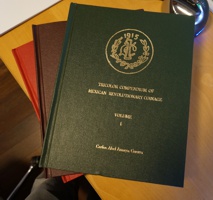
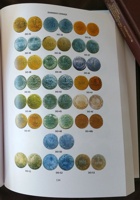
Tricolor Compendium of Mexican Revolutionary Coinage
three volumes
by Carlos Abel Amaya Guerra
Here is also a link to someone who knows about Mexican history.
Don Bailey's website
 Campo Morado (Insurgant forces)
Campo Morado (Insurgant forces)2 Pesos 1915
Karl Stephens, July 2006.
Interestingly this coin states that it contains a small amount of gold and is marked "ORO [gold] : 0.595". It definately has a different color than a pure silver coin. The coin weight is ~24 g and not .595 g as indicated in Krause. This is a silver dollar sized coin with a vertical reeded edge. These 2 Pesos all seem to have striking problems although I've seen single Pesos of this type nicely struck.
In the early 20th century{actually the late 19th} better refining methods were developed but they may not have been deployed in Revolutionary Mexico.
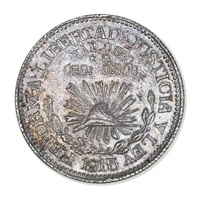
"Guerro Peso"
, 1915, ms
(Sedwicks Auction)
.
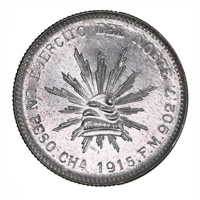
Chihuaha Peso"
1915, ms
(Sedwicks Auction)
.
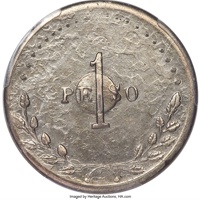
"Peso de Bolita"
Parrel Peso, 1913, ms-62
(Heritage auction)
This type, with the ball over the 1 and Peso is known as a "Peso de bolita".
Fortunately there were also types without the ball, which appear to have been made by the same people at the same time which are much more common and are even readily available in mint state. These are usually much more weakly struck as it was said that the strong striking of the bolitas shattered the die.
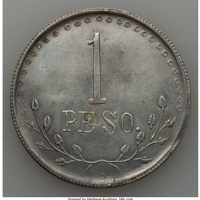
Chihuaha Peso"
Parrel Peso, 1913, ms-62
(Heritage Auction)
This is the Poncho Villa Peso, non-Bolito version. These usually more weakly struck than the Bolitos.
This specimen was cleaned however was very well struck.